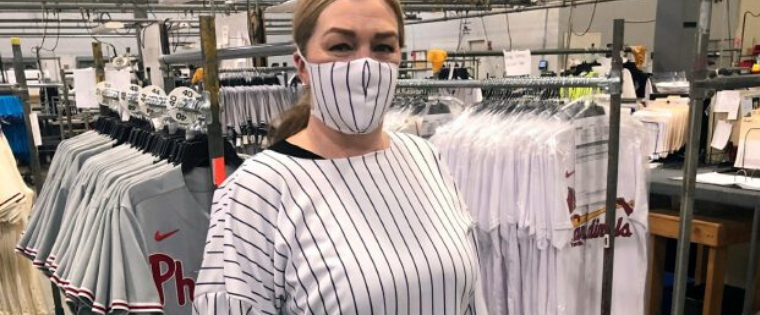
Repurposing For a Greater Good
With the shutdown of vast swaths of brick and mortar stores amid the COVID-19 outbreak, retailers and suppliers have been pitching in to the collective effort to mitigate the effects of the pandemic. In some cases, they’re contributing money or goods. In others, they’ve revamped production lines to deliver products ranging from hand sanitizer, face masks, neck gaiters and medical uniforms to hospital bedding and ventilators.
This repurposing of production serves several goals. There’s obviously the charitable component of supplying much much-needed products to aid in the battle against COVID-19, and helping to support first responders, essential workers, medical personnel and the growing number of people who simply are struggling to make ends meet. It’s admirable in its own right, but also serves to create a brand halo that will likely linger long after the pandemic eases. It can also be a way to activate otherwise idled factories, keeping people employed.
Serving the Greater Good
“Not only does repurposing enable businesses to serve the greater good, it helps companies keep production lines running in times of lower demand,” wholesale and specialty insurance company CRC Group said in a blog post.
Think about Fanatics, in partnership with MLB, using the pinstriped fabric that would have been destined for baseball jerseys and instead instead turning it into surgical masks and gowns. Companies such as Mad Engine and Trevco have taken fabric originally destined for t-shirts and other apparel and re-fashioned it for face masks — creating a charitable endeavor, keeping the production facilities running and its people employed. Greg Norman apparel licensee Tharanco recently signed an agreement to donate one item to the non-profit Delivering Good for every one sold through the Greg Norman Collection ecommerce business. Trevco, Mad Engine and Bioworld are among many companies working with Delivering Good, which takes donations of excess inventory from manufacturers and retailers and re-distributes it to the poor and disadvantaged. The organization experienced a 121% increase in web site traffic the week of March 22-28 and 231% the week of March 29-April 4. The traffic increase mostly was driven by offers of donated goods, with “some very significant donations from existing as well as new donors.”
Brand Positioning
“Brands can position themselves from a business point of view,” says Carole Postal, President of Spotlight Licensing and Brand Management and a board member of Delivering Good. “But I also think this is one of the times that we are all in this together and we don’t know for how long” and charitable giving and donations “are going to be part of business for some time to come.”
Suppliers with excess inventory have “historically dumped goods or shipped them overseas, but they can’t do that now,” says Postal. “Why not donate them to put them to good use? It helps the environment and helps people.”
And while donated protective masks are one of the most visible faces of the pandemic, fragrance suppliers such as Estee Lauder and Coty have shifted some manufacturing lines to hand sanitizer.
“These moves were done from a place of assistance vs. an opportunistic approach to leverage a supply and demand imbalance and significant price advantages” says Stephanie Wissink, an analyst at the investment firm Jefferies. “That said, the longer the demand structure for sanitizers is in place while fragrance sales are weak, there’s clearly an opportunity to pivot a portion of production on a medium-term basis until supply is built in the marketplace.”

















